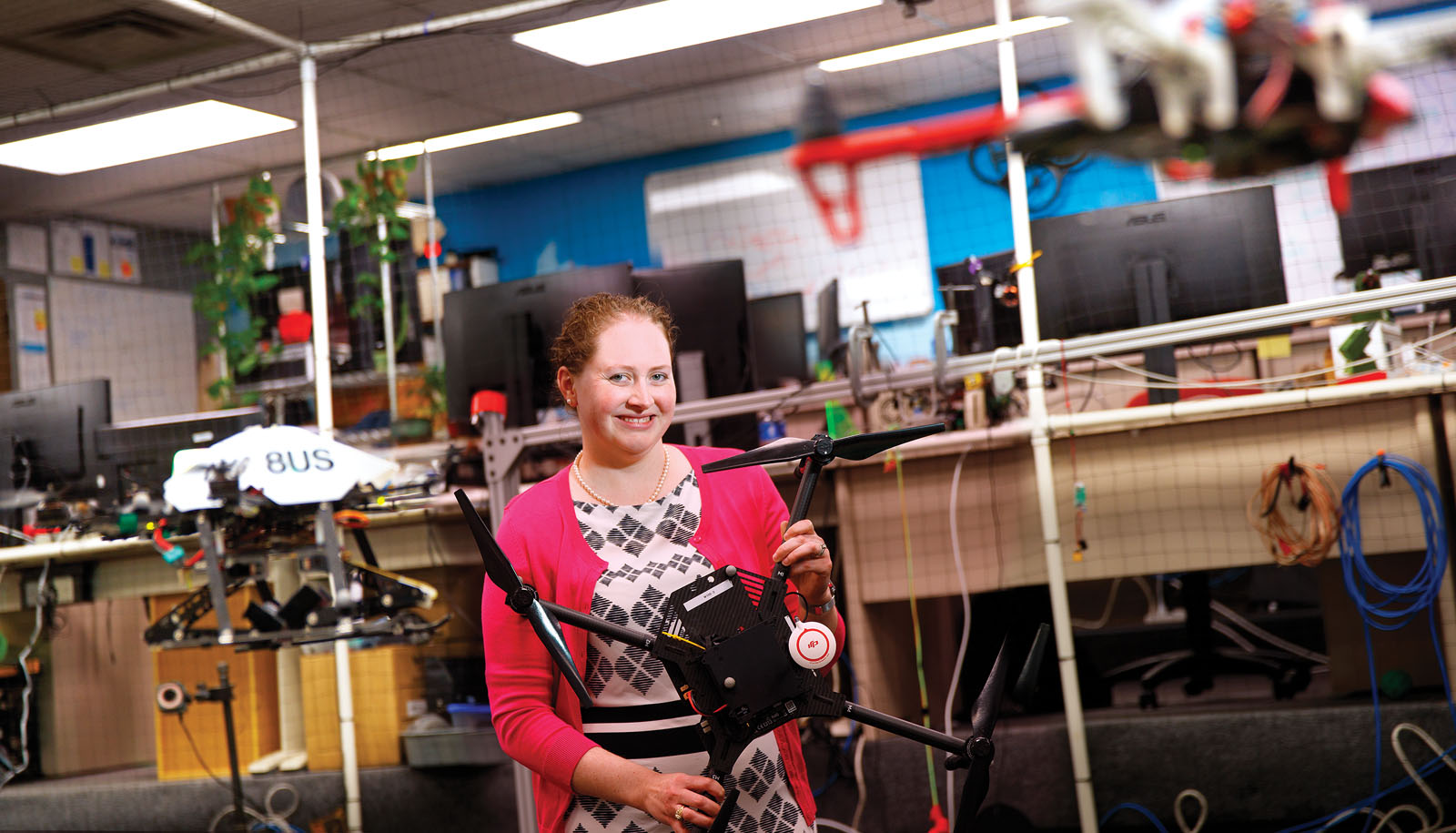Easing People’s Discomfort with Drones
Drone sightings are becoming more common, but many people are still apprehensive being around them.
Nebraska computer scientist Brittany Duncan aims to ease discomfort by enabling drones to communicate their intentions, such as taking photos, and maintain comfortable distances. Communication also could make drones valuable coworkers.
Duncan, assistant professor of computer science and engineering, earned a nearly $550,000 Faculty Early Career Development Program award from the National Science Foundation, the prestigious award given to outstanding pre-tenure faculty.

She’s developing software that equips drones to communicate through movement, such as bobbing. Movement, unlike speech, doesn’t require additional battery-draining hardware.
Duncan’s team is surveying the public to identify movements that are intuitively understood. For example, most people recognize that a drone spiraling downward is landing.
In workplaces, communication-enabled drones could lead forklift operators to inventory, direct agriculturalists to field problems or alert nursing home staff to a distressed resident, among other tasks.
She’s also developing software to prevent drones from coming uncomfortably close depending on conditions, such as enclosed spaces and drone size.
General drone operators may eventually have access to the software, which already is available to prevent drones from flying near airports, a federal restriction.
+ Additional content for Easing People’s Discomfort with Drones
Duncan's CAREER project aims to ease people's discomfort around drones